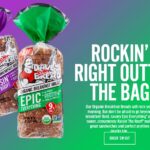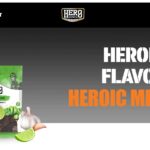Few decisions are as important as the name of your brand. How should a brand manager begin this process? Whether you are naming a soap, a soft drink or a new band, this process can work. (Note to self: I wonder how the band Pussy Riot got their great name)
I have a nine-step process. Walk with me.
I have a nine-step process. Walk with me.
Step One – Keywords
What is the essence of the brand’s position? What single idea do you want this brand to represent? To begin the process, I think it’s great to create a free-flowing list of words that represent the brand. These words should fit in the center of this brand map at the core.
Let’s say you are creating an Internet based business that will deliver videos through the mail and online. So words that should appear on your list could be Internet, movies, films, videos, online, post office, mail, flicks, classics, stories, popcorn and so on. This list should be without limit or constraints but focused on words that fit with the unique selling proposition of the product or brand. It can be about features or benefits. If you are creating a feeling or connecting to an emotion, you want to explore those types of words like joy, happy or ecstatic.
Step Two -Competition
What is the competitive environment? What brands or product names will you be competing with and how can you stand out from the crowd. I like to create another list of those competitive product names and even those that may be outside of your category but could appear as an option for your consumer. So if you are a craft beer, you might compete with hard cider, wine or spirits. Think about words that describe your target, the price you will sell (luxury or value) and the usage occasion such as beer for a fancy parties or beer for the beach.
Step Three- The list
I like to ask several colleagues to take these two lists and to create 10 word combinations that they think might express the key brand idea. Each person should work independently but have a short deadline like one week to complete the task. Collect all the ideas and put them onto a master list.
Step Four – Name Generating Software
I like to use brand name software that enables you to put in some of these key words and get lots of ideas for potential names based on word or segment combinations. One brand name generator in particular I like to use is at www.netsubstance.com It is free and helps to spark even more ideas and word combinations.
Step Five – Top 10
The owner of this process needs to take all the ideas and put together a list of the top 10 that they believe fit the need. I think it is best to have the person responsible for the decision in charge of creating that top 10 list. If you don’t have a good decision making process in place read this post about RACI and decision making. Without clarity about who decides, you can end up with a brand name created by a committee. It was either Vogue Magazine (July 1958), Sir Alec Issigonis or Lester Hunt who said, “a camel is a horse that is designed by a committee. Beware.
Step Six – Create a Survey
I’m a big fan of getting a survey together for colleagues to vote. A little crowd sourcing never hurt anybody and it can engage more stakeholders and get them invested. Don’t forget to include people who aren’t too close to your company who may have a fresh view. It is great if you can get a few customers involved too. Explain the brand position and unique attributes of the product to a large audience. As them to pick 3 names they think best fit the situation and objectives that you put in your survey preamble about the product.
Step Seven – Trademark Check
Review each of the names at the USPTO office through their quick search system TESS found here http://www.uspto.gov/trademarks/index.jspso you can determine if you have a name idea that already exists within your category. If you want to create a brand called APPLE and you are not selling computers but shoes, you may be able to use the name as long as it doesn’t create any confusion to the consumer. Once you review this list, you should consult your trademark council to make sure you are clear on the path forward.
Step Eight – Stakeholder Buy In
Get buy in from those who are key stakeholders on the five to seven ideas that have come through this filter and are worth pursuing. Ask for their choices and learn if any word or phrase is a concern. (The classic example is no one asked if Chevy Nova could be a problem in Latin America where Nova means doesn’t go).
Step Nine – Decide
The decision maker than should choose their top name and write a brief explanation of why they chose that name and show a few mock ups of what the package or communications might look like using that name. If a bigger team has to sign off in a stage gate process, include this brand name brief as an explanation of both the process and the decision.
Now go out and name that puppy.





Thanks Jeffrey – great process! Thanks for sharing.